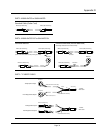
320A
Compellor
Page 38
Digital Audio’s Contributions to the Problem
Death of a Perfectly Good VU Meter
As superior as the VU monitor is for general audio work, it seems the fate of the VU paradigm
is going to be a sad but quiet death from abandonment. Digital audio technocrats are dictating
technology from their laboratories far away from where people create and produce art. They
don’t really know much about VU, which means they don’t really understand the demands of
the art or the end user’s needs.
Birth of dBFS
In the analog world, there can always be found a little more headroom. Magnetic tape has
a very soft and spongy nonlinear area above the maximum operating level. It compresses
peaks without hacking off the tops. Most other electronics have some headroom to spare. It
is seldom catastrophic, from a sonic perspective, when a few peaks hit analog clipping. In the
digital world, the same is not true.
Digital audio has a very hard peak ceiling that literally shaves off any and all excessive peaks.
That causes severe audible distortion and needs to be avoided. True also is that, when the
best digital audio had only 16 bits, it was readily discovered that the best sound came from
recording at the maximum level to capture all the digital quantization possible and stay out of
the low level grunge.
To assist with that cause, digital audio equipment makers disavowed the VU meter in favor of
a new kind of peak responding meter. After a few early experiments, the digital audio meters
have emerged with instant peak response (no peak integration like the PPM) with 0dB at the
very top of the scale. The new scale is called dBFS (dB referred to full scale). This allows you
to accurately see how your audio waves fit below the digital ceiling so you can avoid digital
clipping.
DAT Tragedy
That may seem all well and good considering the fact that 16-bit audio has such limitations.
But, now with 24-bit digital audio prevalent with its much greater useful dynamic range, the VU
meter has not been reintroduced and probably won’t be unless a stroke of luck knocks some
sense into somebody along the line. That is because of DAT machines.
Digital audio users get precious little technical training. What little there is comes from the
equipment’s user manuals. DAT machines were the first popular digital recording media.
Through the DAT manuals, users were taught to record the average levels at -18dB. OK, fine,
if that means you are to record the average levels at –18dBFS. That leaves 18dB for swells
of volume level and the host of variable peaks that may rise above by up to 14dB. The DAT
manuals forgot to tell you that, however, and it was wrongly interpreted to mean the recording
of average peaks should be at –18dBFS. That has unfortunately stuck as a general digital
audio practice that needs to be corrected. The Compellor Model 320D can truly help.
Where The Compellor Fits In
The Compellor is an automatic level controlling device. In a VU world, its results are readily
visible. Varying input levels become better matched and consistent output levels. The meters
show it. In a PPM or dBFS world, it takes some understanding to see how the Compellor can
be used effectively.


















